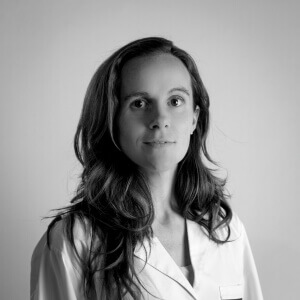What Are Natal and Neonatal Teeth?


Escrito y verificado por la odontóloga Vanesa Evangelina Buffa
Natal and neonatal teeth are a concern among parents. When they discover that their children have already been born with teeth or that teeth appear in the first 30 days of life, they usually make a dental or pediatric consultation to resolve their doubts.
Although most children see their first teeth emerge at around 6 months of age, there are some babies who come out of their mother’s womb with one or more teeth. It’s not a frequent situation, but the statistics specify that it happens in 1 in 3000 births.
However, some series of epidemiological studies have revealed higher incidences, reaching 1 case every 521 deliveries. Among these, the vast majority are natal, while a minority correspond to neonatal teeth. In the following article, we’ll analyze their differences.
What are natal teeth?
Natal teeth are those that are present from the moment of birth. That is, the child is born with dental elements that are already in the mouth during childbirth.
Babies with this characteristic usually develop their lower central incisors first. And it’s not uncommon for this to happen in pairs. In other words, they’re born with both elements. More than two natal teeth are very rare.
These natal teeth tend to be part of the child’s temporary dentition which, under normal conditions, would emerge around 6 months of life. Therefore, very few natal elements are supernumerary or would be classified as “extra teeth.”
Even as part of the temporary dentition, they don’t always retain their normal shape or structure. They tend to be smaller and with a cone shape. Also, since enamel and dentin are thinner, they appear yellowish.
What are neonatal teeth?

The concept of “neonatal teeth” comes from a scientific communication from the year 1950, by the authors Massler and Savara. These experts laid the foundation for the classification of this phenomenon today.
According to their proposal, we must speak of neonatal elements when they’re not present at birth but develop during the first 30 days of life. In other words, in the period that pediatrics defines as neonatal.
In theory, this early emergence is due to the fact that the tooth germ, the unit that stores the structure, is closer to the gum surface. Therefore, as it grows, it exits the oral cavity earlier than expected, for the simple fact that it has less distance to travel.
Before the clarity of concepts brought by Massler and Savara, natal and neonatal teeth received different names:
- Congenital teeth
- Fetal teeth
- Predeciduous teeth
Since 1950, cases have been divided into natal and neonatal. The authors also analyze the development of the dental element present in the mouth and classify it as mature or immature.
Characteristics
Studies of cases in different countries have revealed that most of the time, we’re faced with teeth that are normal. Only that they erupted into the oral cavity ahead of time.
However, this doesn’t rule out the possibility that the teeth have different characteristics depending on the patient. In this regard, the following are contexts of clinical presentation that a professional should consider when caring for a baby with natal or neonatal teeth:
- The tooth is supernumerary. It’s an extra dental piece that’s not part of the normal count of the mandibular arches. It’s not usual, but a professional must identify that it’s supernumerary in order to proceed with its extraction.
- The tooth moves. Although in most cases, the piece is fixed and well held in place, some may have mobility. This would indicate that the element is loose and that there’s a risk that it will detach and travel backward into the digestive or respiratory tract.
- The tooth has no roots. Hypoplastic formation of enamel and dentin may be accompanied by a small or absent root. This also conditions mobility, as we clarified in the previous point.
What are the causes of natal and neonatal teeth?
The etiology of natal and neonatal teeth is still unclear. It’s even assumed that there are several factors that can contribute to their appearance. And they don’t all have to be present or repeated in each patient.
A scientific study by Samuel et al. from the year 2018, analyzed the possible causes behind a series of cases. Following their findings, we find that the final result is an alteration in the chronobiology of the eruption. This is associated with the more superficial presence of the tooth germ.
In turn, the authors found that the following situations were reported in the medical literature as risk factors:
- Infection in the mother or fetus: The presence of fever, due to the disease, could accelerate eruption.
- Malnutrition with hypovitaminosis: A deficiency of vitamins in the maternal diet could affect the development of the baby.
- Hormonal stimulation: The consumption of certain drugs during pregnancy or the presence of diseases linked to the endocrine system, such as hypothyroidism, could alter the rate of dental eruption.
- Heredity: It’s not unlikely that a family history of natal and neonatal teeth can be traced in babies born with them.
These precocious dental elements seem to be more frequent when the pregnant mother went through some complicated situation during the pregnancy. Therefore, Samuel et al. also discovered that twin pregnancies, the presence of diabetes, and eclampsia increased the possibility that the baby would be born with them.
The management and approach of natal and neonatal teeth
The low frequency of natal and neonatal teeth doesn’t mean that they should be taken lightly. According to the latest treatment recommendations in this regard, the possible complications and their scenarios should first be assessed to then determine whether or not to perform an extraction.
In general, children don’t need more than a check up after the accurate diagnosis of the specialist. Few patients will require surgery.
Complications requiring extraction

The following are the situations that, upon evaluation by a professional team, could lead to tooth extraction in the baby:
- Riga-Fede ulcer: This is a lesion on the tongue or gums due to a natal or neonatal tooth that hurts the soft tissues of the mouth because it’s prematurely in its place or because it’s poorly located.
- Loose teeth: If the element isn’t fixed, it could cause aspiration in the neonate. Especially when the tooth doesn’t have a good root.
- Eating disorders: The premature tooth can interfere with breastfeeding, not only injuring the mother’s nipple but causing discomfort in the child, who could reject the breast. Therefore, it would be preferable to prioritize feeding or look for alternatives to maintain correct nutrition.
What if the tooth isn’t extracted?
The British Dental Journal suggests that general dentists are the first to diagnose natal and neonatal teeth. Then, if they suspect complications, they’ll refer an expert team from the health system to evaluate the extraction.
But the truth is that most will only require long-term monitoring. With periodic appointments, the professional will review the state of the dental element, as well as the tongue and gums. In addition, they’ll offer guidance regarding preferred hygiene so that parents and caregivers can avoid cavities.
Polishing of dental edges is a less invasive approach option than extraction. The dentist reduces the sharp surfaces of the natal or neonatal tooth so that they don’t cause trauma to the soft tissues.
If the tooth is mobile, a splint is another less invasive approach. If these options fail, the professional will proceed with the extraction.
Natal and neonatal teeth are a concern among parents. When they discover that their children have already been born with teeth or that teeth appear in the first 30 days of life, they usually make a dental or pediatric consultation to resolve their doubts.
Although most children see their first teeth emerge at around 6 months of age, there are some babies who come out of their mother’s womb with one or more teeth. It’s not a frequent situation, but the statistics specify that it happens in 1 in 3000 births.
However, some series of epidemiological studies have revealed higher incidences, reaching 1 case every 521 deliveries. Among these, the vast majority are natal, while a minority correspond to neonatal teeth. In the following article, we’ll analyze their differences.
What are natal teeth?
Natal teeth are those that are present from the moment of birth. That is, the child is born with dental elements that are already in the mouth during childbirth.
Babies with this characteristic usually develop their lower central incisors first. And it’s not uncommon for this to happen in pairs. In other words, they’re born with both elements. More than two natal teeth are very rare.
These natal teeth tend to be part of the child’s temporary dentition which, under normal conditions, would emerge around 6 months of life. Therefore, very few natal elements are supernumerary or would be classified as “extra teeth.”
Even as part of the temporary dentition, they don’t always retain their normal shape or structure. They tend to be smaller and with a cone shape. Also, since enamel and dentin are thinner, they appear yellowish.
What are neonatal teeth?

The concept of “neonatal teeth” comes from a scientific communication from the year 1950, by the authors Massler and Savara. These experts laid the foundation for the classification of this phenomenon today.
According to their proposal, we must speak of neonatal elements when they’re not present at birth but develop during the first 30 days of life. In other words, in the period that pediatrics defines as neonatal.
In theory, this early emergence is due to the fact that the tooth germ, the unit that stores the structure, is closer to the gum surface. Therefore, as it grows, it exits the oral cavity earlier than expected, for the simple fact that it has less distance to travel.
Before the clarity of concepts brought by Massler and Savara, natal and neonatal teeth received different names:
- Congenital teeth
- Fetal teeth
- Predeciduous teeth
Since 1950, cases have been divided into natal and neonatal. The authors also analyze the development of the dental element present in the mouth and classify it as mature or immature.
Characteristics
Studies of cases in different countries have revealed that most of the time, we’re faced with teeth that are normal. Only that they erupted into the oral cavity ahead of time.
However, this doesn’t rule out the possibility that the teeth have different characteristics depending on the patient. In this regard, the following are contexts of clinical presentation that a professional should consider when caring for a baby with natal or neonatal teeth:
- The tooth is supernumerary. It’s an extra dental piece that’s not part of the normal count of the mandibular arches. It’s not usual, but a professional must identify that it’s supernumerary in order to proceed with its extraction.
- The tooth moves. Although in most cases, the piece is fixed and well held in place, some may have mobility. This would indicate that the element is loose and that there’s a risk that it will detach and travel backward into the digestive or respiratory tract.
- The tooth has no roots. Hypoplastic formation of enamel and dentin may be accompanied by a small or absent root. This also conditions mobility, as we clarified in the previous point.
What are the causes of natal and neonatal teeth?
The etiology of natal and neonatal teeth is still unclear. It’s even assumed that there are several factors that can contribute to their appearance. And they don’t all have to be present or repeated in each patient.
A scientific study by Samuel et al. from the year 2018, analyzed the possible causes behind a series of cases. Following their findings, we find that the final result is an alteration in the chronobiology of the eruption. This is associated with the more superficial presence of the tooth germ.
In turn, the authors found that the following situations were reported in the medical literature as risk factors:
- Infection in the mother or fetus: The presence of fever, due to the disease, could accelerate eruption.
- Malnutrition with hypovitaminosis: A deficiency of vitamins in the maternal diet could affect the development of the baby.
- Hormonal stimulation: The consumption of certain drugs during pregnancy or the presence of diseases linked to the endocrine system, such as hypothyroidism, could alter the rate of dental eruption.
- Heredity: It’s not unlikely that a family history of natal and neonatal teeth can be traced in babies born with them.
These precocious dental elements seem to be more frequent when the pregnant mother went through some complicated situation during the pregnancy. Therefore, Samuel et al. also discovered that twin pregnancies, the presence of diabetes, and eclampsia increased the possibility that the baby would be born with them.
The management and approach of natal and neonatal teeth
The low frequency of natal and neonatal teeth doesn’t mean that they should be taken lightly. According to the latest treatment recommendations in this regard, the possible complications and their scenarios should first be assessed to then determine whether or not to perform an extraction.
In general, children don’t need more than a check up after the accurate diagnosis of the specialist. Few patients will require surgery.
Complications requiring extraction

The following are the situations that, upon evaluation by a professional team, could lead to tooth extraction in the baby:
- Riga-Fede ulcer: This is a lesion on the tongue or gums due to a natal or neonatal tooth that hurts the soft tissues of the mouth because it’s prematurely in its place or because it’s poorly located.
- Loose teeth: If the element isn’t fixed, it could cause aspiration in the neonate. Especially when the tooth doesn’t have a good root.
- Eating disorders: The premature tooth can interfere with breastfeeding, not only injuring the mother’s nipple but causing discomfort in the child, who could reject the breast. Therefore, it would be preferable to prioritize feeding or look for alternatives to maintain correct nutrition.
What if the tooth isn’t extracted?
The British Dental Journal suggests that general dentists are the first to diagnose natal and neonatal teeth. Then, if they suspect complications, they’ll refer an expert team from the health system to evaluate the extraction.
But the truth is that most will only require long-term monitoring. With periodic appointments, the professional will review the state of the dental element, as well as the tongue and gums. In addition, they’ll offer guidance regarding preferred hygiene so that parents and caregivers can avoid cavities.
Polishing of dental edges is a less invasive approach option than extraction. The dentist reduces the sharp surfaces of the natal or neonatal tooth so that they don’t cause trauma to the soft tissues.
If the tooth is mobile, a splint is another less invasive approach. If these options fail, the professional will proceed with the extraction.
- Bulut, G., Bulut, H., & Ortac, R. (2019). A comprehensive survey of natal and neonatal teeth in newborns. Nigerian journal of clinical practice, 22(11), 1489-1494.
- Caicedo, P. A. O., Espinel, N. G. B., Quevedo, M. A. C., Sanjuan, J., & Rojas, S. E. A. (2017). Dientes neonatales: Reporte de caso. Journal Odontológico Colegial, 10(20), 18-20.
- de Borgarello, L. T., de Ibañez, M. M., & Escudero, M. A. Dientes natales y neonatales. Estudio de prevalencia y orientación de su tratamiento. Revista de la Facultad de Odontología, 41-54.
- DeSeta, M., Holden, E., Siddik, D., & Bhujel, N. (2022). Natal and neonatal teeth: a review and case series. British Dental Journal, 232(7), 449-453.
- Holden, E., DeSeta, M., Siddik, D., & Bhujel, N. (2022). Natal and neonatal teeth: A review and management recommendations. Journal of Neonatal Nursing.
- Massler, M., & Savara, B. S. (1950). Natal and neonatal teeth: a review of twenty-four cases reported in the literature. The Journal of pediatrics, 36(3), 349-359.
- Moreno, C. G., & Argueta, G. G. (2022, October). Tratamiento de la úlcera de Riga Fede. In XXI Congreso Latinoamericano de Odontopediatría (Vol. 12, No. Suplemento).
- Samuel, S. S., Ross, B. J., Rebekah, G., & Koshy, S. (2018). Natal and neonatal teeth: a tertiary care experience. Contemporary clinical dentistry, 9(2), 218.
- Umayal, S., Gounder, R., & Ganapathy, D. (2019). Neonatal teeth and its causes-A review. Drug Invention Today, 11(2).
Este texto se ofrece únicamente con propósitos informativos y no reemplaza la consulta con un profesional. Ante dudas, consulta a tu especialista.







